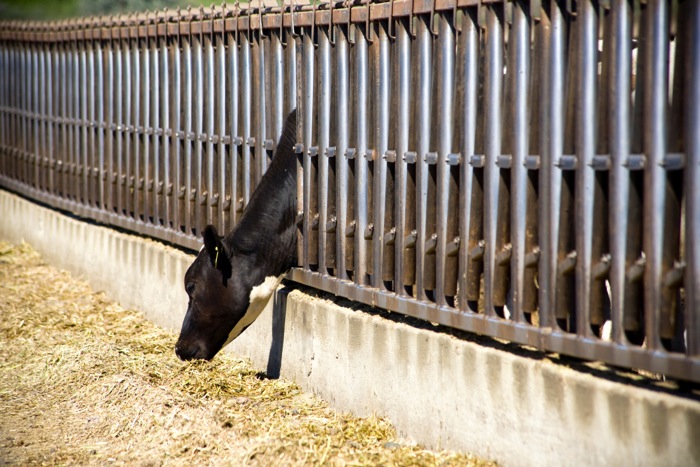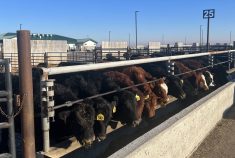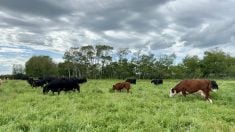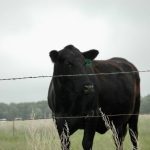Throughout my career, I have had numerous opportunities to meet and talk with beef producers across Canada and in countries such as Mexico, China, New Zealand and Japan. However, until recently I never had the opportunity to interact in an extension setting with American producers. That changed last month when I gave a presentation to a group of North Dakota beef producers on the use of alternative feeds. As I prepared for this meeting, I did a background search on North Dakota agriculture. I must admit that relative to neighbouring Saskatchewan, I was a bit surprised to find that in seeded acreage, soybean production predominates, followed by wheat and corn. Canola is a distant fourth with barley, oats and pulses relegated to relatively minor acreages.
As you know from reading this column, many of the alternative feeds available in Canada arise as byproducts of the cereal, oilseed and pulse processing sectors. The same is true for North Dakota and surrounding states; however, the difference in production acreage allocated to specific crops has a dramatic effect on the type of byproduct available. To illustrate, let’s look at the nutritional value of the major byproducts coming out of the oilseed processing and ethanol sectors in Canada and the United States.
[RELATED] What to consider when choosing alternate cattle feed sources
Read Also

Canadian Cattle Young Leaders, national Environmental Stewardship Award winner and more
Canadian beef industry news, including award winners and job changes.
First, let’s examine the oilseed-processing sector. As one would expect, oilseed-processing capability tends to locate in areas where production predominates. For example, in Canada soybean processing predominates in Ontario where the majority of production has historically been located. In North Dakota, a major soybean processing facility is currently under construction to support production in that state. In Western Canada, canola processing has undergone astronomical growth and is still expanding to match canola production capacity. For cattle producers, the two major byproducts that come out of the oilseed-processing sector are canola meal and soybean meal. Both products are excellent protein sources for livestock with canola meal at 42 per cent CP (DM basis) and soybean meal at 49 per cent (DM basis).
The two protein sources, while similar in bypass protein content, differ in essential amino acid content with canola meal being higher in methionine and cysteine while soybean meal is higher in lysine and other essential amino acids. These differences in protein quantity and quality typically result in soybean meal bringing a premium relative to canola meal, particularly in monogastric diets. In beef cattle diets, where amino acid content is not as highly valued, canola meal can be readily substituted for soybean meal, particularly if it is priced competitively on a per unit of protein basis. According to the 2016 Nutrient Requirements of Beef Cattle publication, the two protein sources also differ in energy content, with soybean meal approximately 14 per cent higher in TDN than canola meal. This is a difference that one should account for when comparing these two protein sources. The above discussion refers to solvent-extracted canola or soybean meal.
Recently, there has been an expansion in soybean and canola processing that involves either cold or expeller pressing to extract the oil from the seed. While protein content is reduced somewhat, protein quality of the meal is not greatly affected. The major difference between solvent versus cold pressed or expelled meal is that in the latter two cases, the meal contains 10 to 12 per cent oil, which greatly increases its energy content and nutritional value.
The ethanol sector is a major user of cereal grains, particularly the corn-based ethanol industry in the United States. In Canada, ethanol plants are primarily wheat-based in the West and corn-based in the East. Again, such differences reflect local availability of the primary cereal gain used for fermentation. While there are many potential byproducts from cereal-based ethanol production (i.e. wet cake, stillage), the major commercial product is dried distillers grains with solubles (DDGS). DDGS represents the residual dry matter from the corn or wheat kernel after the starch has been fermented to produce ethanol plus any yeast, enzymes or urea that was added to facilitate fermentation.
Like the oilseed meal comparison above, the nutritive value of DDGS depends largely on the cereal grain used for fermentation. For example, when wheat is the fermentation substrate, the DDGS has a higher crude protein (CP) content than when corn is used (i.e. 40 versus 30 per cent CP, respectively). In contrast, corn DDGS at 86 to 88 per cent TDN is typically higher in energy than wheat-based DDGS at 80 to 82 per cent TDN. Both are excellent protein sources for growing and finishing cattle as well as for the breeding herd. A rule of thumb that I use when feeding DDGS is that one pound of DDGS can replace one pound of barley or corn without seriously affecting dietary energy density while concurrently supplying 1/3 of a pound of crude protein of which 50 per cent or more is bypass protein. Elevated sulphur levels (i.e. one per cent or higher) can be a concern with some of these byproducts, particularly DDGS, which when competitively priced is often fed at elevated levels (i.e. 20 to 40 per cent or more of diet dry matter). In such situations, the potential for outbreaks of polio increases.
As you can see, there are local differences in the byproduct feeds used by Canadian and American beef producers. Regardless of source, the key to efficient use is knowledge of nutrient content and competitive pricing.

















